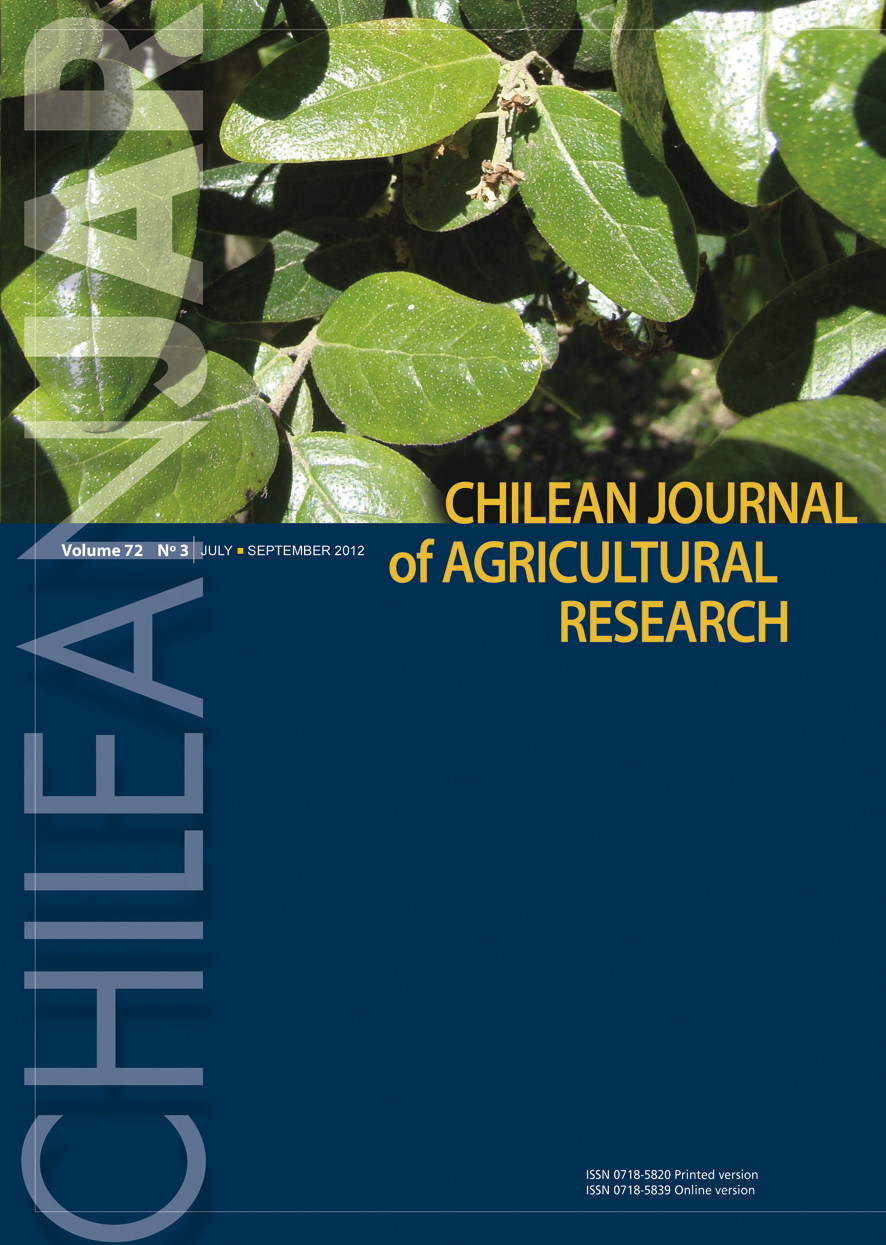
|
Chilean Journal of Agricultural Research
Instituto de Investigaciones Agropecuarias, INIA
ISSN: 0718-5820 EISSN: 0718-5839
Vol. 69, Num. 3, 2009, pp. 303
|
Chilean Journal of Agricultural Research, Vol. 69, No. 3, July-Sept, 2009, pp. 303
EDITORIAL
Hommage to Dr. Norman E. Borlaug
Mario Mellado Z.
Wheat breeder,
Emeritus researcher,
Instituto de Investigaciones Agropecuarias INIA
Code Number: cj09035
Dr. Norman E. Borlaug, the distinguished agriculture researcher and 1970 Nobel Peace Prize, died in Texas, United States on September 12, 2009.
He is considered to be the father of the Green Revolution in the world and the central axis of his work was in the Centro Internacional de Mejoramiento de Maíz y Trigo (CIMMYT) located in Mexico. From there, he extended hundreds of technological networks with dozens of countries, especially with those of the developing world, though the doors of his big field laboratory were open to scientists from the whole world without distinction. These networks brought knowledge along with the improved wheat varieties that replaced with astonishing success the old seeds that some peasants had sown for generations.
One of the most important aspects of his great work in the field of wheat breeding was the creation of dwarf or short varieties resistant to disease, high yield grain, and above all, largely adaptable. He made it possible for his new varieties to be distributed to diverse parts of the world where they contributed in mitigating the hunger of millions of people, and as a result, received a well-deserved Nobel Peace Prize in 1970.
Many countries, among them Chile, benefited with the wheat genetic material created by this scientist who incarnated the concept that it is better to teach how to fish than giving away fish. His intellectual openness and interest to impart knowledge surpassed every limit and he shared with researchers in the wheat fields of the CIMMYT in Obregón, Mexico, up until a few months before his death, unconcerned about his advanced age and failing health. It is probable that some people who were present during his last visit to those breeding nurseries will have thought that his work as a plant breeder, started in 1945 in Valle del Yaqui (Mexico) by candlelight, over the years would be transmitted throughout the world as if it were the greatest spark that nature can produce.
His conferences and meetings in the field, whether for a very specialized or less learned public, had a very educational and stimulating content, but above all, an enviable simplicity. Justifying this teaching style, he pointed out that the person who understands what s/he says will always find a simple means to explain it. In this way, many of the genetic and statistical concepts led him to terminology that could be assimilated even by the most humble peasant. He related that when he wanted to demonstrate that a variety of wheat was superior to another, or that a certain dose of fertilizer was the best, instead of talking about “significant differences”, it was enough for him to gather together the harvest of each treatment so that the farmer could observe it, compare it, and come to his own conclusions. In spite of being an elite scientist, his great modesty and quality as a person led him with an absolutely natural manner to interact and treat others as equals, demonstrating great generosity, especially with the most humble peasants of Asia, Africa, or Latin America whom he remembered a great deal in his conferences and in informal conversations.
We were privileged that on various occasions he visited Chile with the aim of sharing his knowledge and experiences with scientists connected to wheat breeding and agronomy, as well as with the government authorities at that time.
In the Instituto de Investigaciones Agropecuarias (INIA), he shared his experiences from around the world with plant breeders, phytopathologists, and wheat specialists, among them René Cortázar S., Ignacio Ramírez A., Patricio Parodi P., Lilián Aguayo Ch., Juan Acevedo A., Cristián Hewstone M., Oscar Moreno M., Rodolfo Gonzales B., Héctor Wulf M., Denise Granger Z., Milan Caglevic C., Ernesto Hacke E., Ricardo Madariaga B., Iván Matus T., Claudio Jobet F., and the undersigned. I can point out with absolute certainty that the above-mentioned, some of whom have already left us, were very fortunate to know and share knowledge and experiences with Dr. Borlaug.
Without a doubt, there will be many countries that will pay tribute to this great agronomist researcher who is and will be an example of life and science for all those who have embraced the area of creating knowledge.
With profound admiration
Copyright 2009 - Chilean Journal of Agricultural Research
|
